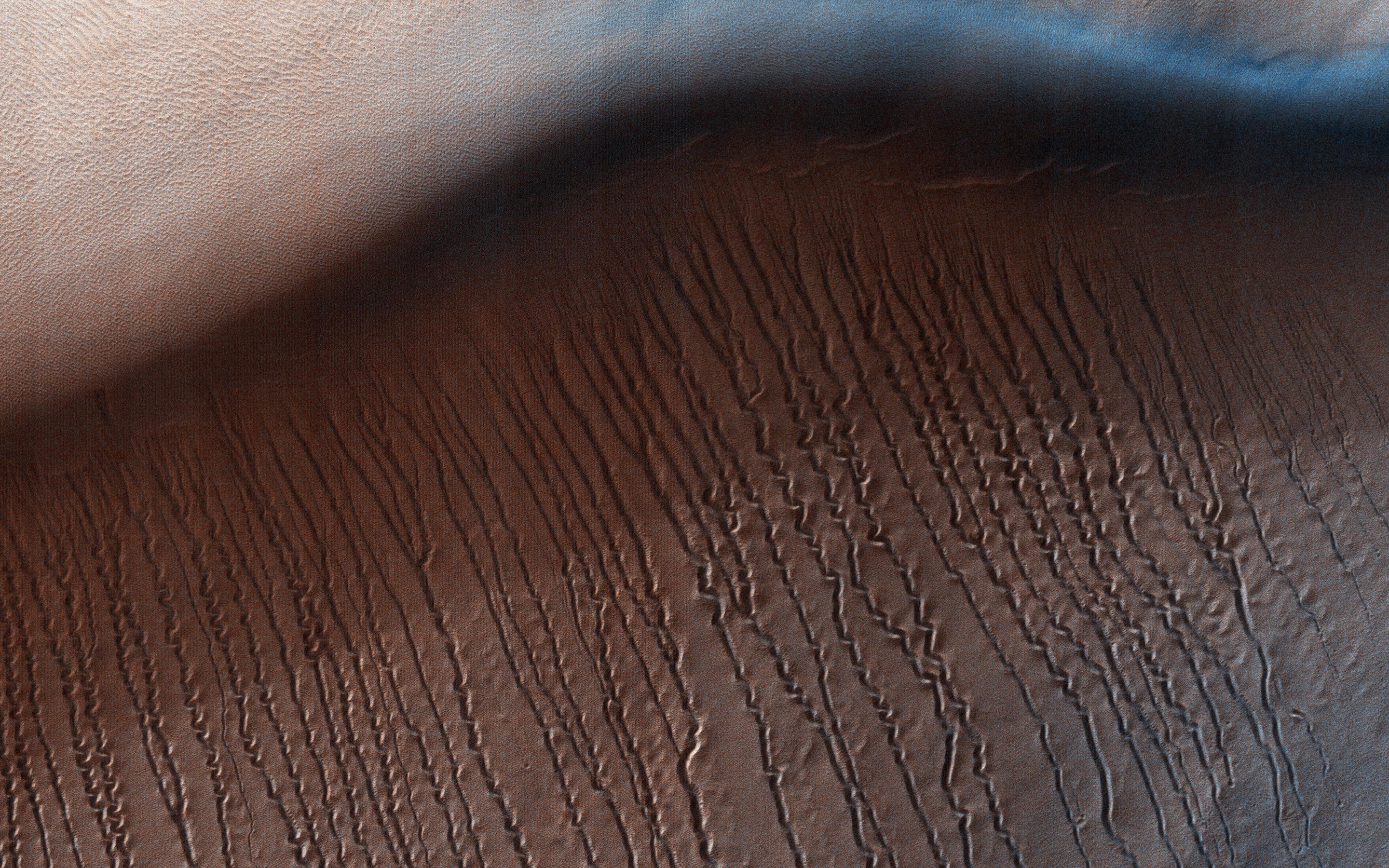Sinuous Gullies Snake Down Sand Dune on Mars (Photo)

These Martian gullies may be linear, but they're far from straight.
A striking new photo by NASA's Mars Reconnaissance Orbiter (MRO) shows dozens of parallel gullies snaking their way down the face of a sand dune, like they were emplaced there by a raking giant with a shaky hand.
The dune lies within the 1,400-mile-wide (2,200 kilometers) Hellas Planitia impact basin, at about 45 degrees south latitude. Carbon-dioxide frost covers such high-latitude areas during the Martian winter. Scientists think linear gullies form when chunks of this dry ice break apart and slide down slopes like the pictured dune. [See more amazing Mars photos by MRO]
Why, exactly, these gullies are so squiggly remains mysterious.
"The linear gullies exhibit exceptional sinuosity (the squiggle pattern), and we believe this to be the result of repeated movement of dry-ice blocks in the same path, possibly in combination with different hardness or flow resistance of the sand within the dune slopes," NASA officials wrote in a photo description Monday (Oct. 30). "Determining the specific process that causes the formation and evolution of sinuosity in linear gullies is a question scientists are still trying to answer."
Though NASA just released the photo Monday, MRO took the image (with its supersharp High Resolution Imaging Science Experiment, or HiRISE, camera) on Aug. 17.
Dry ice didn't carve all of Mars' gullies and channels. Indeed, many such features — imaged by NASA's twin Viking orbiters, MRO and other spacecraft — were shaped by liquid water long ago, when the Red Planet still had a global magnetic field and a thick atmosphere.
Get the Space.com Newsletter
Breaking space news, the latest updates on rocket launches, skywatching events and more!
Some of these wet environments may even have supported life. For example, NASA's Curiosity rover mission determined that the 96-mile-wide (154 km) Gale Crater harbored a long-lasting, potentially habitable lake-and-stream system billions of years ago. (Definitive evidence of Mars life still has not been found, however.)
MRO has also spotted dark streaks on steep Martian slopes during warm parts of the year. Many researchers think salty liquid water causes these features, known as recurring slope lineae, but not everyone is convinced.
Follow Mike Wall on Twitter @michaeldwall and Google+. Follow us @Spacedotcom, Facebook or Google+. Originally published on Space.com.
Join our Space Forums to keep talking space on the latest missions, night sky and more! And if you have a news tip, correction or comment, let us know at: community@space.com.

Michael Wall is a Senior Space Writer with Space.com and joined the team in 2010. He primarily covers exoplanets, spaceflight and military space, but has been known to dabble in the space art beat. His book about the search for alien life, "Out There," was published on Nov. 13, 2018. Before becoming a science writer, Michael worked as a herpetologist and wildlife biologist. He has a Ph.D. in evolutionary biology from the University of Sydney, Australia, a bachelor's degree from the University of Arizona, and a graduate certificate in science writing from the University of California, Santa Cruz. To find out what his latest project is, you can follow Michael on Twitter.









